Michelangelo's Rome: Discover Masterpieces Beyond Museums
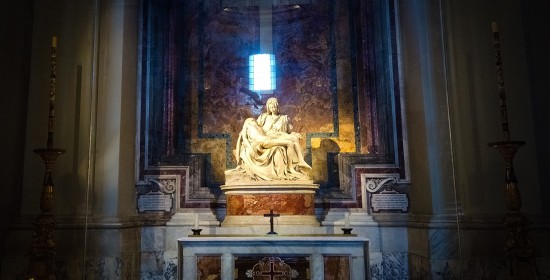
Buongiorno and welcome to Stefano Rome Tours, Rome’s premier tour company for private tours of Rome and Shore Excursions from Civitavecchia since 20024. Embark on a captivating journey of Michelangelo's Rome as we discover masterpieces beyond museums.
From the sacred halls of St. Peter's Basilica to the lesser-known Basilica di San Pietro in Vincoli, each stop reveals a piece of Michelangelo's enduring legacy. Our exploration extends beyond artworks to Michelangelo's impressive architectural contributions that have left an indelible mark on the city.
Join us in unraveling the profound impact of Michelangelo on the Eternal City, a legacy that defies the confines of traditional museums.
Michelangelo's Rome:
Discover Masterpieces Beyond Museums
-
MICHELANGELO'S MASTERPIECES in ROME
St Peter’s Basilica: The Pieta
Inside the sacred Saint Peter's Basilica, Michelangelo's "Pieta" stands as a testament to the timeless beauty of grief and the transcendent power of art. This masterpiece depicts a youthfully beautiful Virgin Mary tenderly cradling the lifeless form of her crucified son on her lap, an emotional subject that would continue to captivate Michelangelo throughout his illustrious career.
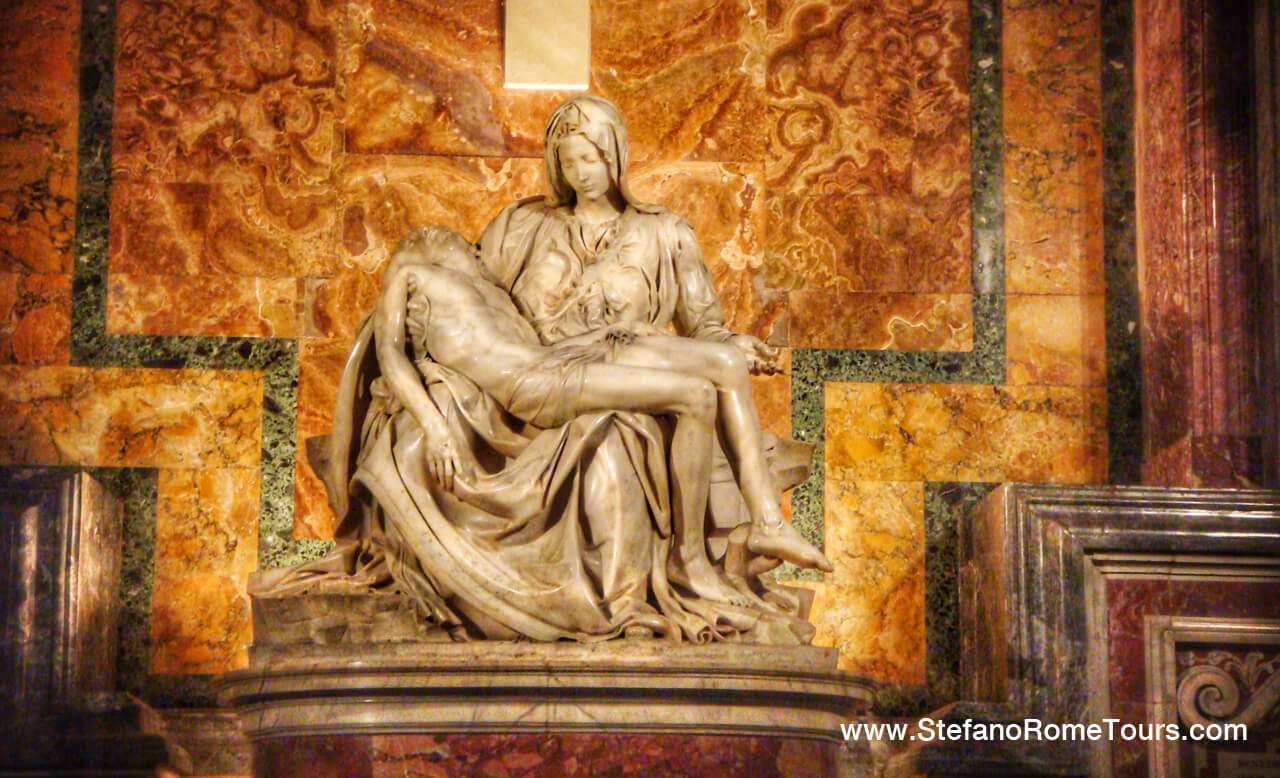
The creation of the Pietà represented a pivotal moment in Michelangelo's artistic journey, signifying his inaugural public commission in the vibrant city of Rome. A mere 24 years old at the time, the budding artist completed the sculpture in 1499, propelling him into the forefront of the art world and charting a course toward lasting acclaim. Originating from a commission by French Cardinal Jean de Bilhères for his memorial at St. Peter's Basilica, this sculptural masterpiece emerged as an emblem of Michelangelo's unparalleled creative prowess.
Jacopo Galli, a companion of Michelangelo, stood as the contract's guarantor and made a daring pledge to Cardinal Bilhères, vowing to deliver the most exquisite marble work in Rome, unrivaled by any contemporary artist. Astonishingly, Michelangelo not only met but surpassed these towering expectations. Giorgio Vasari, a contemporary in the realm of art history, found himself awestruck by the masterpiece, hailing it as a "miracle" that breathed life into a shapeless block of stone, achieving a perfection akin to the wonders of nature.
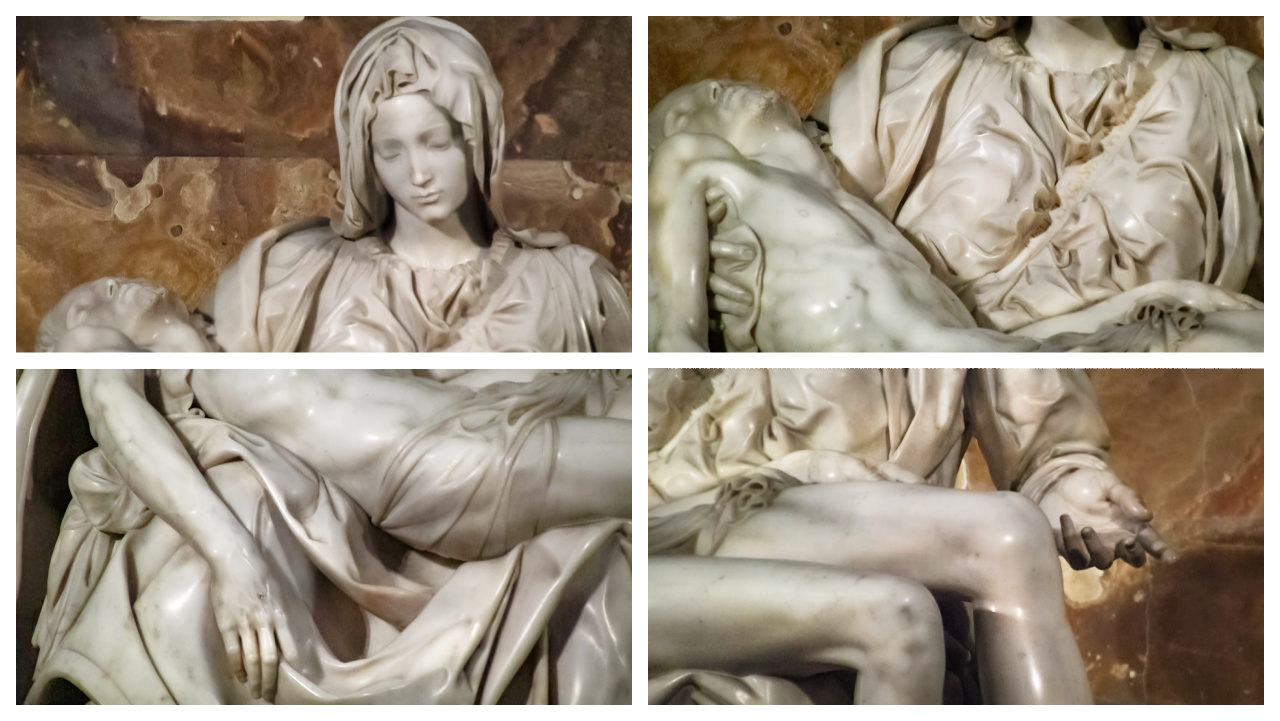
The Pietà possesses a distinctive feature absent in Michelangelo's other masterpieces: Michelangelo's own signature. Legend has it that infuriated by visitors wrongly accrediting the masterpiece to a lesser Milanese artist, Michelangelo snuck back in the middle of the night and skillfully carved his name onto the sash across the Virgin's chest. Though the tale may carry a touch of embellishment, the signature on the masterpiece stands as a tangible testament to the young master's recognition of his ascending superstardom.
The "Pieta" continues to be a source of wonder and contemplation, drawing visitors from around the world to experience the profound emotion captured within its marble contours and to witness the early brilliance of Michelangelo, who left an indelible mark on the world of art.
Basilica of St. Peter in Chains: Moses
Nestled near the Colosseum, the Basilica of St. Peter in Chains (Basilica di San Pietro in Vincoli) proudly houses one of Michelangelo's masterpieces—the awe-inspiring sculpture of "Moses."
Originating from a grand commission for a tomb dedicated to Pope Julius II, this monumental statue vividly captures the strength and intensity of the biblical figure. The Basilica, a site of historical significance, welcomes visitors at no cost, providing an opportunity to marvel at Michelangelo's artistic brilliance.
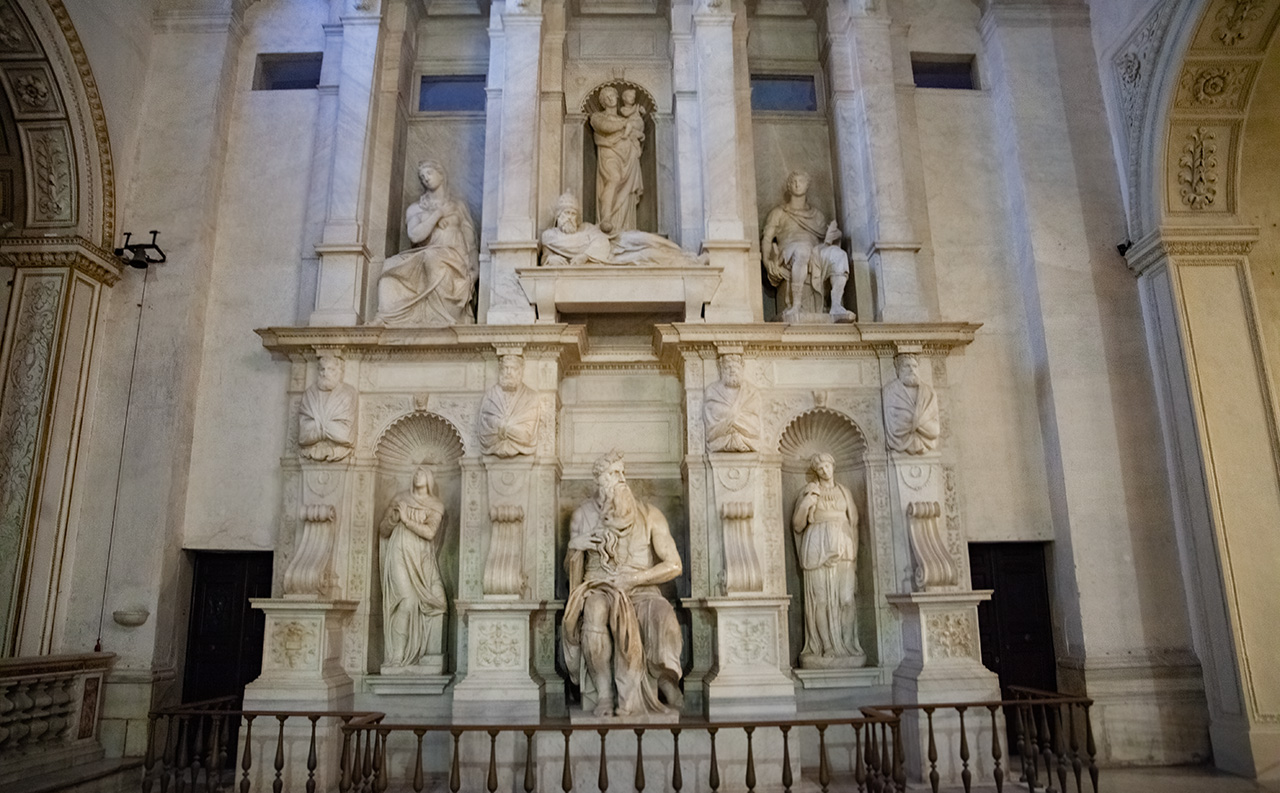
Inspired by a divine directive in 1505, Pope Julius II summoned Michelangelo to Rome to conceive a magnificent tomb befitting the earthly representative of God. Michelangelo envisioned a massive free-standing funerary monument destined for St. Peter’s Basilica, featuring over 40 figures, including the remarkable struggling slaves now divided between the Louvre Museum in Paris and the Academia Gallery in Florence.
Despite interruptions—chiefly the Sistine Chapel ceiling fresco project—Michelangelo's reduced vision for the monument found its place in the unassuming church of San Pietro in Vincoli in 1545. Though the scaled-down project was a far cry from Michelangelo's initial grandiose vision, what emerged was nothing short of spectacular.
Central to this ensemble is an 8-foot-tall statue of the Hebrew prophet Moses—a pinnacle of Renaissance sculpture. The seated prophet, depicted with a flowing beard twisted between his fingertips and clutching the tablets of the 10 Commandments exudes charismatic leadership. The unusual pair of horns on Moses' head stems from a biblical translation mishap by St. Jerome in the 4th century, adding an intriguing element to the sculpture.
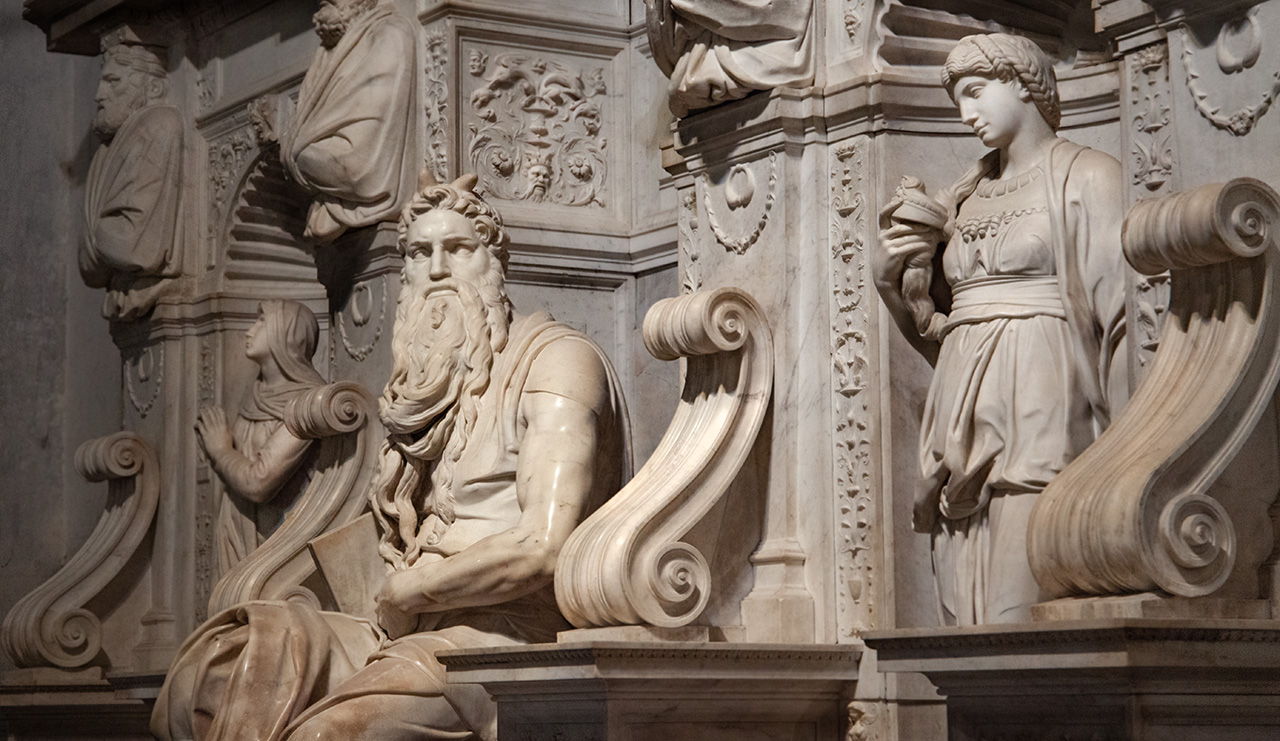
Moses' eyes flash with fury, and his dramatically intense expression perfectly encapsulates Michelangelo's renowned 'terribilità'—the unique ability of his works to instill awe and terror. In Moses' psychological depth, one can catch a glimpse of the famously cantankerous Michelangelo himself. This captivating masterpiece within the Basilica di San Pietro in Vincoli remains a testament to Michelangelo's enduring genius and artistic legacy.
The intensity of the artwork is vividly captured in the prophet's eyes, which seem to flicker with fury. This attribute is not only associated with Michelangelo’s artistic prowess and sculptural masterpieces, such as the iconic figures of David and Moses but also his challenging and formidable personality.
While praising Michelangelo's artistic achievements, Pope Leo X remarked on Michelangelo's terribile character, stating, "But he is terribile, as you see; one cannot deal with him". In response, Sebastiano defended Michelangelo, asserting that his formidable demeanor did not harm anyone and that it was a manifestation of his passion for the exceptional works he created.
In essence, terribilità encapsulates the dual nature of Michelangelo's impact—both in the profound emotions evoked by his art and in the formidable personality that accompanied his creative genius.
Basilica di Santa Maria Sopra Minerva: Christ the Redeemer
Situated just behind the Pantheon, the Basilica di Santa Maria Sopra Minerva is home to Michelangelo's captivating sculpture, "Christ the Redeemer".
This lesser-known masterpiece portrays Christ in the act of carrying the cross and graces the left transept of the church. As one of Rome's prominent churches, the Basilica warmly welcomes visitors without charging an entrance fee, creating a tranquil setting for an encounter with this extraordinary artwork.
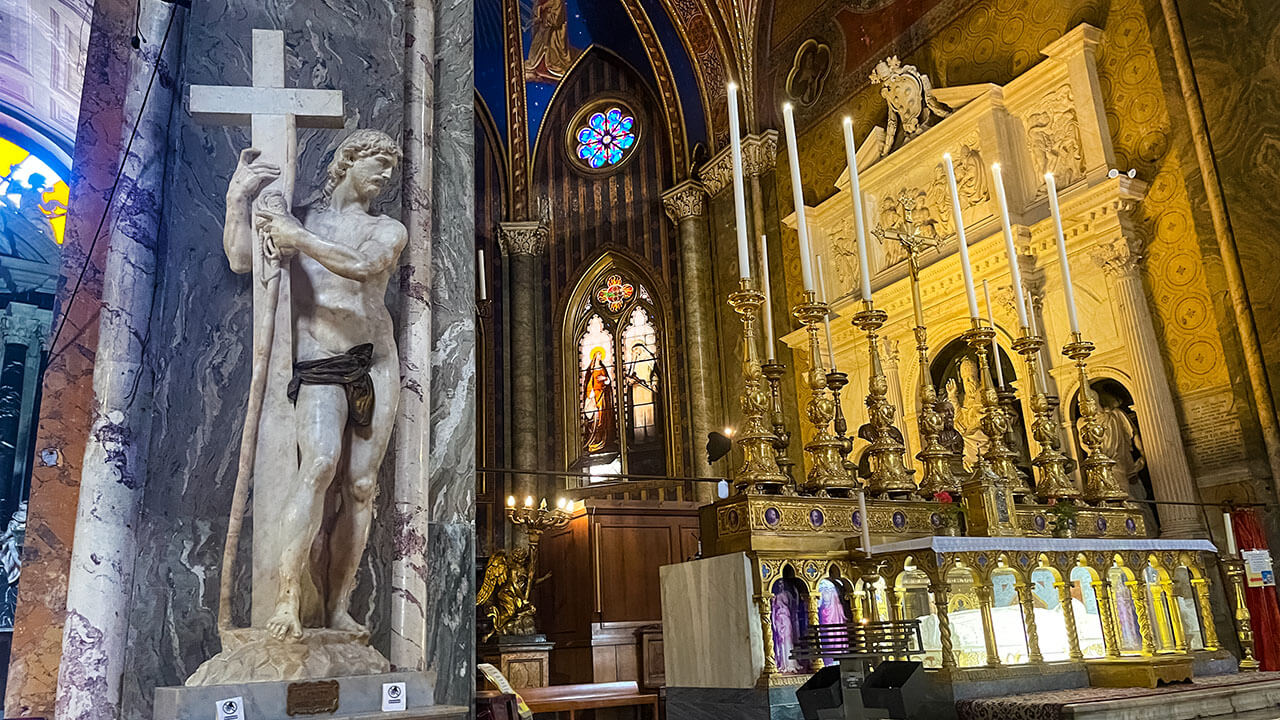
In 1514, Michelangelo, albeit reluctantly, undertook the task of sculpting a nude Resurrected Christ for the church of Santa Maria Sopra Minerva at the request of the Roman patrician Metello Vari. A setback arose when a fatal flaw in the marble compelled Michelangelo to abandon his initial endeavor. Undeterred, he swiftly crafted a second version between 1519 and 1520 to fulfill the expectations of his increasingly impatient patron.
The resulting sculpture portrays the Risen Christ in a twisting pose, initially devoid of any clothing—a choice that remains mysterious, with a later-added loincloth seen as a prudish addition. The somewhat reserved depiction of Jesus clutching a much smaller cross, while not as emotionally charged as some of Michelangelo’s other works, still captivates viewers.
Contemporaries were notably impressed by the figure's sinuous contrapposto, with the painter Sebastiano del Piombo expressing profound admiration. According to del Piombo, Christ's knees alone were deemed more valuable than the entirety of Rome. Visit this spectacular Gothic church and immerse yourself in the presence of Michelangelo's "Christ the Redeemer".
-
MICHELANGELO’S ARCHITECTURAL CONTRIBUTIONS TO ROME
Dome of St Peter’s Basilica
In 1546, Michelangelo, then 71, assumed the role of chief architect for St. Peter's Basilica in the Vatican.
Donato Bramante had initially designed the basilica, but the project underwent significant changes under five successive architects during the first 40 years of construction. When Michelangelo took charge, the structure resembled more of a Roman ruin than a grand basilica. His primary challenge was addressing the engineering complexities of raising a dome as large as the Pantheon but twice as high.
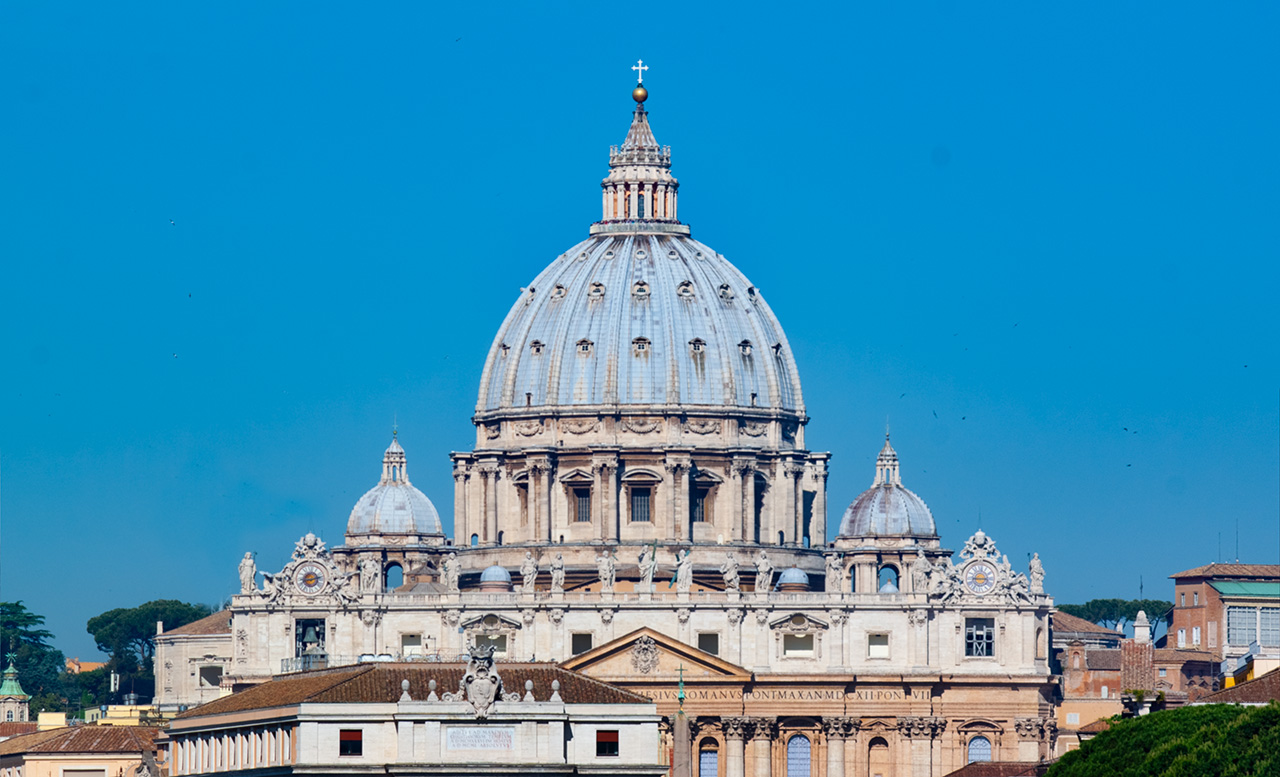
Michelangelo's architectural vision departed from the rules of Vitruvius and ancient architecture, introducing a revolutionary perspective. Michelangelo's innovative approach involved a departure from the practices of his predecessors. Instead of rigidly adhering to plans drawn on paper, he believed in letting the compasses guide the eyes. In other words, he encouraged a more intuitive and dynamic process, allowing the visual perception to lead the way, free from the limitations imposed by traditional drawings on paper.
His sculptor's background influenced a unique approach, infusing his structures with a distinct sense of sculptural living presence, deviating from the conventions of structures heavily anchored to the ground.
Taking control of the construction site, where enormous piers were rising, Michelangelo inherited various schemes from eminent 16th-century architects. Despite diverse ideas from his predecessors, he incorporated them into his grand vision. Recognizing the pivotal quality of Bramante's original design, he opted for a Greek Cross plan. This departure from previous geometric forms, as noted by Helen Gardner, transformed intricate complexity into massive, cohesive unity.
St. Peter's, expanded with a nave by Carlo Maderno, showcases Michelangelo's monumental contribution at the chancel end. His design reduced clearly defined geometric forms, creating a continuous wall surface with angles lacking the typical right angles of conventional buildings. Corinthian pilasters surrounding the exterior at slightly different angles, along with a rippling cornice, contribute to the impression of a building in perpetual compression.
The pinnacle of Michelangelo's architectural legacy at St. Peter's is the towering dome, reaching a height of 136.57 meters, making it the world's tallest. Its internal diameter slightly surpasses that of the Pantheon and Florence Cathedral, exemplifying Michelangelo's innovative solutions in crafting what was conceived as the greatest dome of Christendom.
Capitoline Hill (Piazza del Campidoglio)
Michelangelo's profound influence on the city of Rome extended beyond sculpting and painting, encompassing a visionary contribution to architectural masterpieces. Among his notable endeavors, the transformation of Piazza del Campidoglio on Capitoline Hill stands as a testament to his unparalleled skill and foresight.
In 1536, Pope Paul III, driven by a desire to revitalize the neglected Piazza del Campidoglio, commissioned Michelangelo for the ambitious task. This initiative coincided with the visit of the Spanish Emperor Charles V, highlighting the importance attached to the square's overall arrangement. The Florentine architect embarked on an extensive redesign, creating a uniform design that marked a departure from traditional approaches.
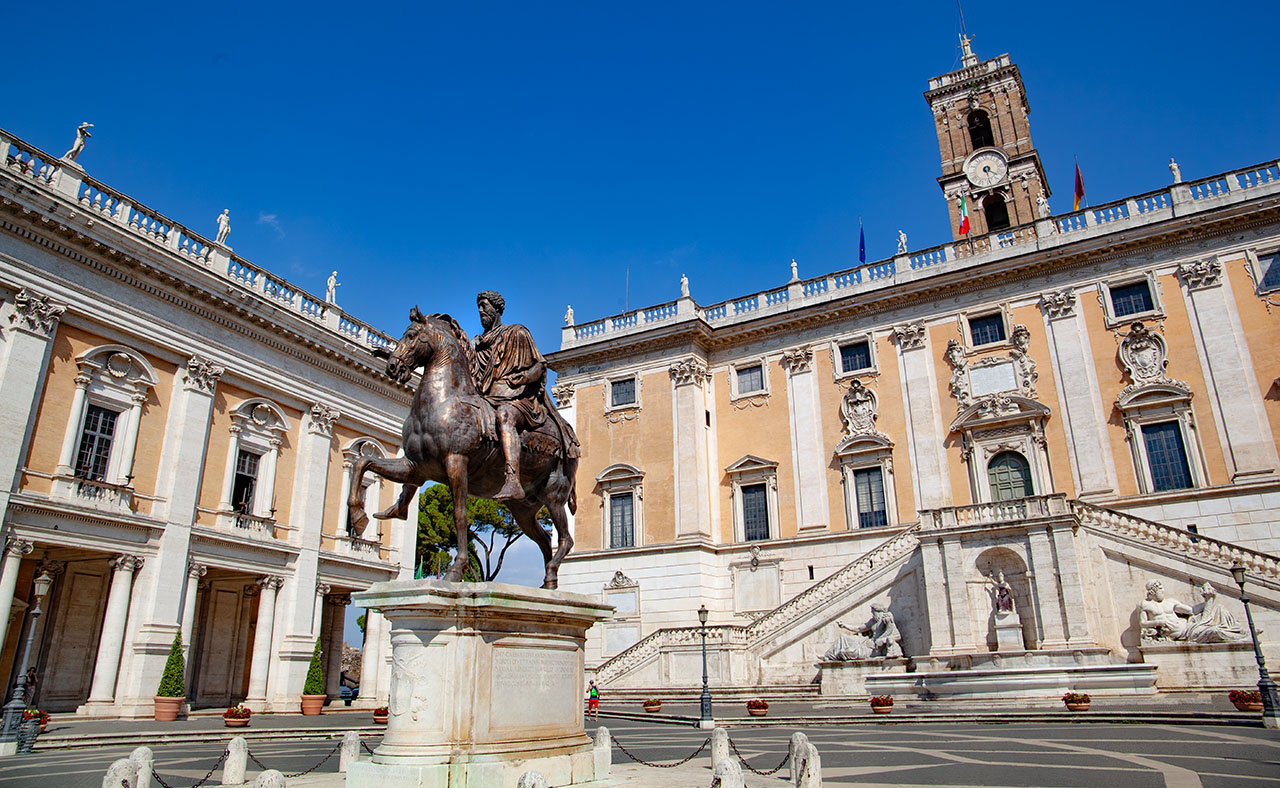
One of Michelangelo's pivotal additions was an elegant podium crafted for the equestrian statue of Marcus Aurelius, placed strategically at the heart of the hill in 1537. This became the centerpiece of the new urban design, radiating a sense of grandeur and symmetry. The imposing "Cordonata", a wide step staircase, was another stroke of Michelangelo's genius. Named to allow knights easy ascent, it culminated in a solemn balustrade adorned with classical marble groups, contributing to the aesthetic appeal of the square.
Around 1546, Michelangelo turned his attention to the Palazzo Senatorio, crafting its façade that now serves as the backdrop to the main view of the square. He also designed a two-flight front staircase that framed a splendid fountain, adding an exquisite touch to the architectural ensemble. The Palazzo Senatorio's bell tower, built later, became home to the famous "patarina" bell, a historic artifact used to announce significant events in Rome.
Michelangelo's vision expanded further with the renovation of the Palazzo dei Conservatori and the construction of the Palazzo Nuovo, framing the square on three sides. Despite the passing of years and the involvement of various architects, including Giacomo della Porta and Carlo Rainaldi, construction concluded in 1655, resulting in a Piazza del Campidoglio characterized by admirable homogeneous style.
Today, these palaces house the renowned Capitoline Museums, preserving Michelangelo's legacy as not only a sculptor and painter but also a visionary architect who breathed new life into the heart of Rome. The trapezoid-shaped piazza approached via the cordonata, remains one of the most charming places.
Basilica of Santa Maria degli Angeli e Martiri
In the Basilica of Santa Maria degli Angeli e Martiri, Michelangelo's contribution stands as a testament to his unparalleled skill and ambition during the twilight of his illustrious career. The basilica occupies the remnants of the colossal ancient Roman Baths of Diocletian, which, by the 16th century, had fallen into ruins, attracting artists and bandits alike.
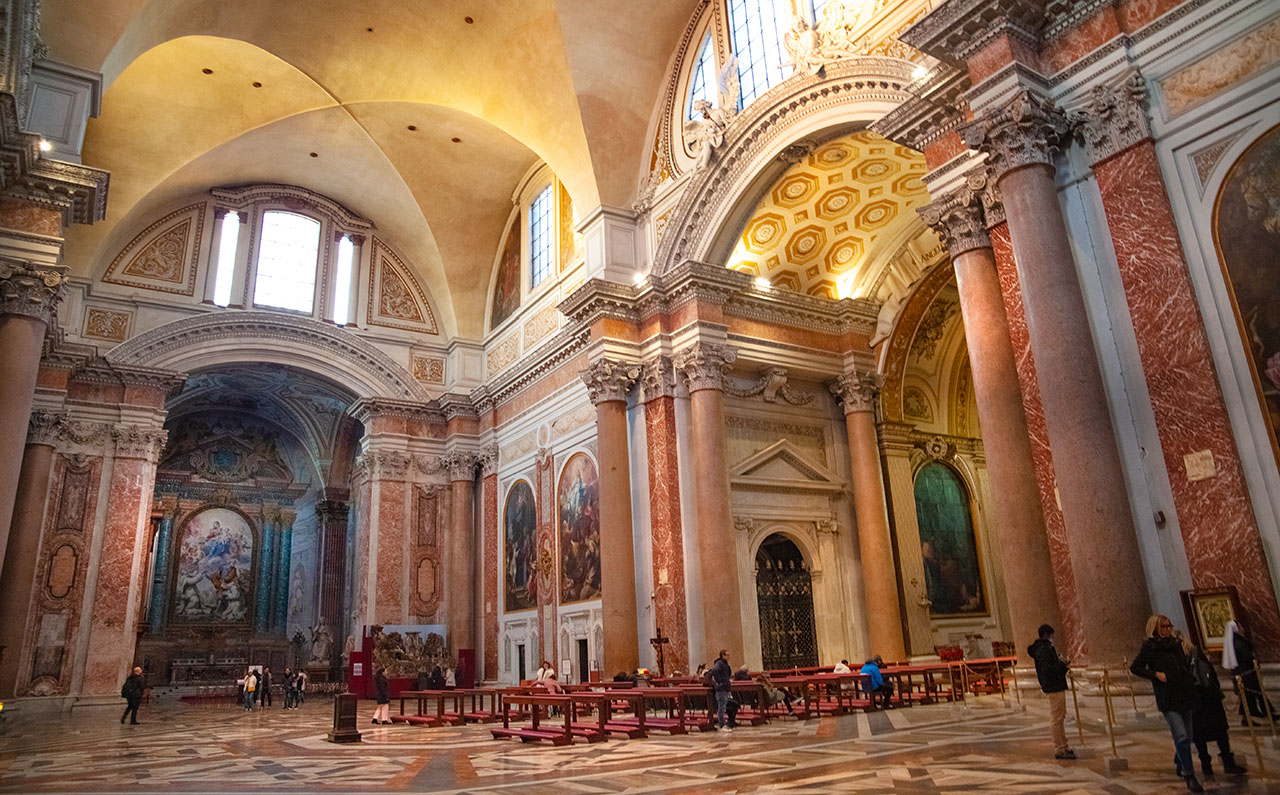
In 1559, Pope Pius IV, recognizing Michelangelo's unparalleled talent even at the age of 85, commissioned him to devise plans for a church within the ancient baths. Encouraged by the fervent Sicilian prelate Antonio del Duca, the church was dedicated to honor Christian slaves who, legend had it, perished while constructing the baths under a persecuting pagan emperor in the 4th century.
Michelangelo, with profound respect for the ancient complex, ingeniously transformed its surviving walls into the façade of the new church. Despite its unassuming and unfinished-looking brick exterior, the basilica conceals one of Rome's grandest places of worship. Occupying just a part of the ancient baths – the frigidarium, or cold water pool – the church's vast interior provides insight into Michelangelo's inspiration drawn from the majestic scale of ancient architecture.
While the elaborate paintings and marble embellishments inside are products of 18th-century remodeling, the space itself serves as a testament to Michelangelo's ability to match the brilliance of the ancients, as proclaimed by his Renaissance contemporaries. Michelangelo, the towering genius of the Renaissance breathed his last in 1564, just shy of his 89th birthday.
Porta Pia
Commissioned by Pope Pius IV, Porta Pia earned its name as it bears the mark of the pontiff who ordered its construction. The task was entrusted to Michelangelo, and between 1561 and 1565, he devised a design that would replace the nearby Porta Nomentana, a gate located less than a hundred meters to the east, subsequently closed off.
Situated on the square bearing the same name, Porta Pia stands proudly as one of the 18 gates seamlessly integrated into the formidable Aurelian Walls.
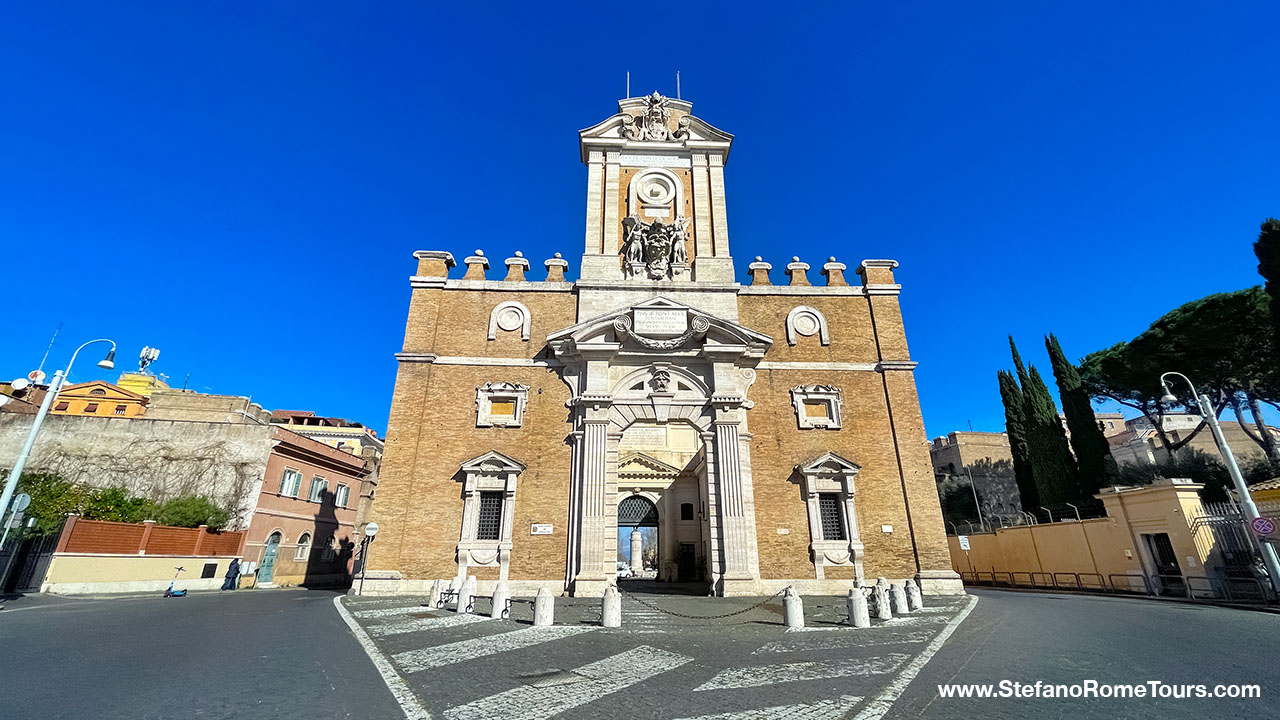
Michelangelo, in his characteristic style, presented three distinct projects to the pope, each described as "extravagant and beautiful" by Vasari. However, despite the allure of the elaborate designs, Pope Pius IV, exhibiting pragmatism, opted for the most cost-effective option among them. Unfortunately, the specific details of these drawings remain unknown, with only a handful of sketches offering glimpses into certain elements.
Considering Michelangelo's advanced age of eighty-five during this undertaking, the execution of the project was likely not solely overseen by the master himself. The meticulous nature of the work may have required the assistance of Michelangelo's collaborators to ensure the project's realization aligned with the visionary artist's intentions. Despite the absence of complete certainty regarding the adherence to the original design, Porta Pia stands as a testament to the intersection of artistic brilliance and practicality, marking yet another remarkable chapter in Michelangelo's enduring legacy.
The imposing structure of Porta Pia seamlessly integrates with the Aurelian Walls, but it harbors a delightful surprise on its internal facade.
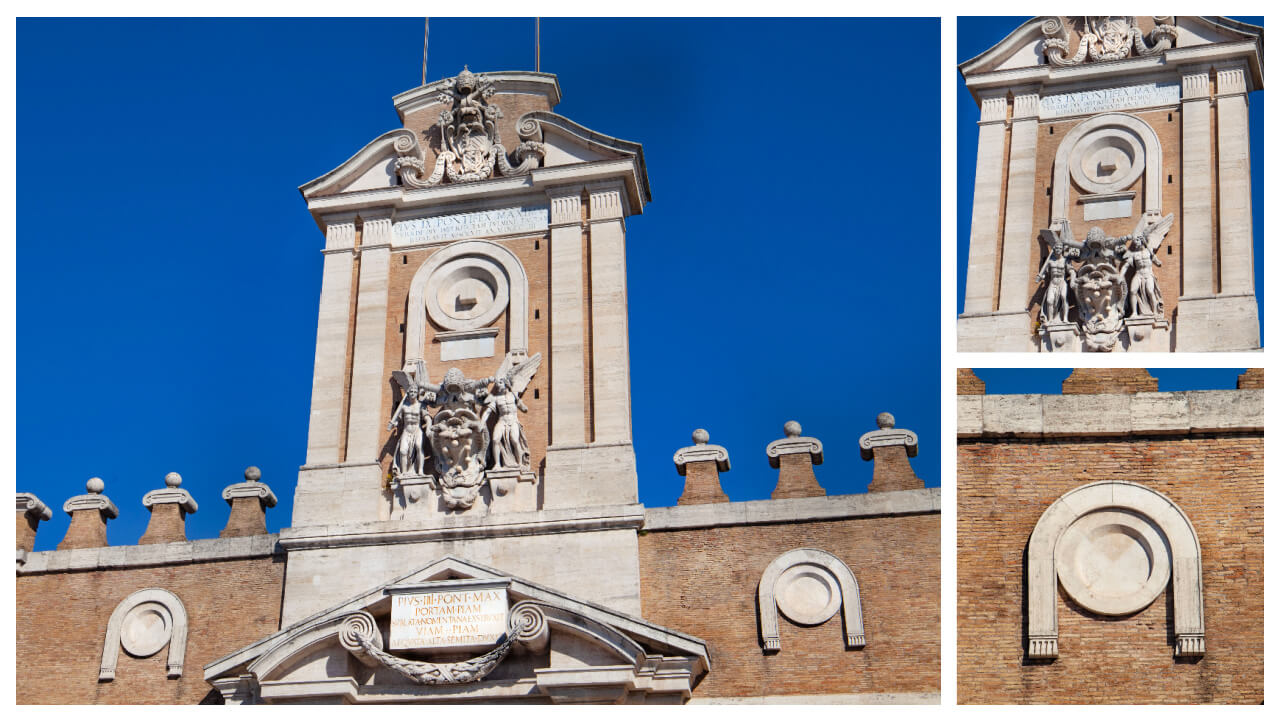
Initially, the abstract designs may seem atypical of Michelangelo's style and they baffled people for centuries, but upon closer inspection, they reveal themselves as symbolic representations of marble bowls encircled by a stole. Strategically positioned, these designs evoke the imagery of barber trays, complete with a central towel and a piece of soap.
But WHY would Michelangelo include such designs that are so uncharacteristic?
According to legend, this creative touch by Michelangelo was a subtle jest aimed at the humble origins of Pope Pius IV Medici. The portrayal playfully mocks the Pope's lineage as a descendant of Milanese barbers, and not related to the illustrious Florentine Medici family. Despite this cheeky reference, the Pope was granted the privilege to display the Medici coat of arms, suggesting a potential close political relationship between the two influential families.
In summary, Michelangelo's impact on Rome is tangible, imprinting an enduring mark on the city's essence. While exploring Rome, immerse yourself in these sacred places where Michelangelo's genius comes alive. Take a moment to appreciate the timeless beauty of his masterpieces and marvel at his architectural contributions, allowing the city to become a canvas that vividly displays the enduring legacy of Michelangelo in every corner.
If you wish to see any of these Michelangelo masterpieces in Rome, book a driver in Rome for the day, visit only the places you wish, and tour Rome at your own pace. We invite you to also browse through our collection of private tours of Rome from our top-selling Postcard Rome Tour or our delightful La Dolce Vita Rome tour. Our Rome tours are possible as a day tour from Rome, Civitavecchia Shore Excursions, and Post-Cruise tours from Civitavecchia.
